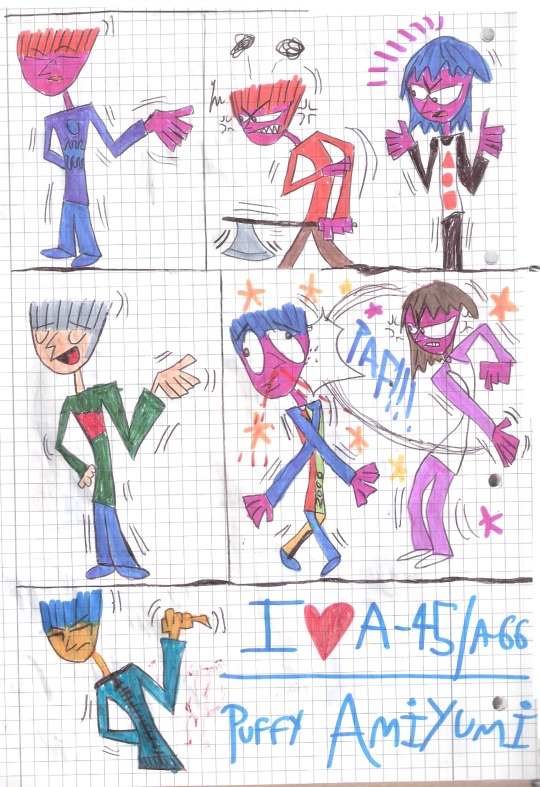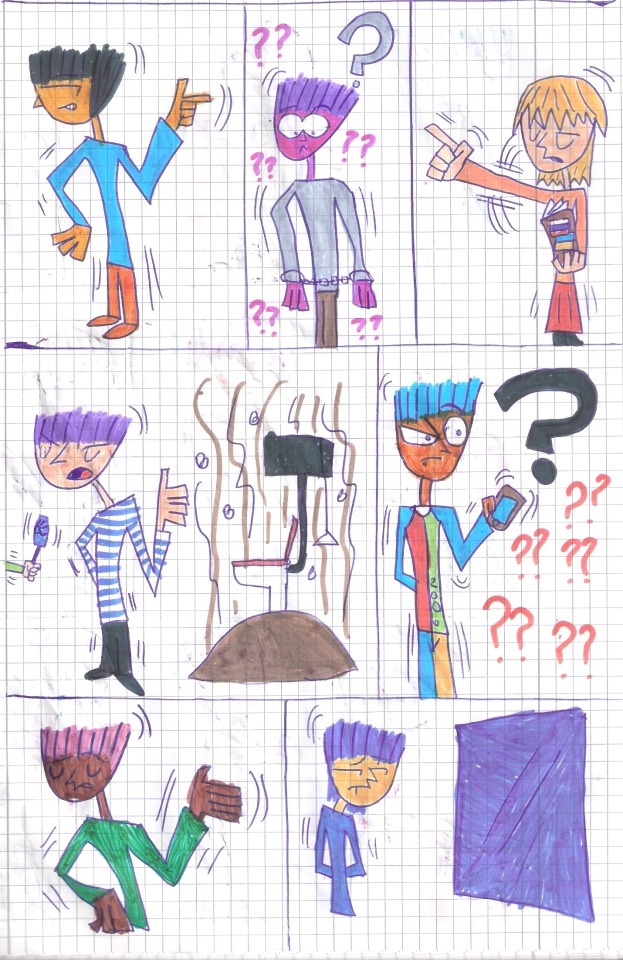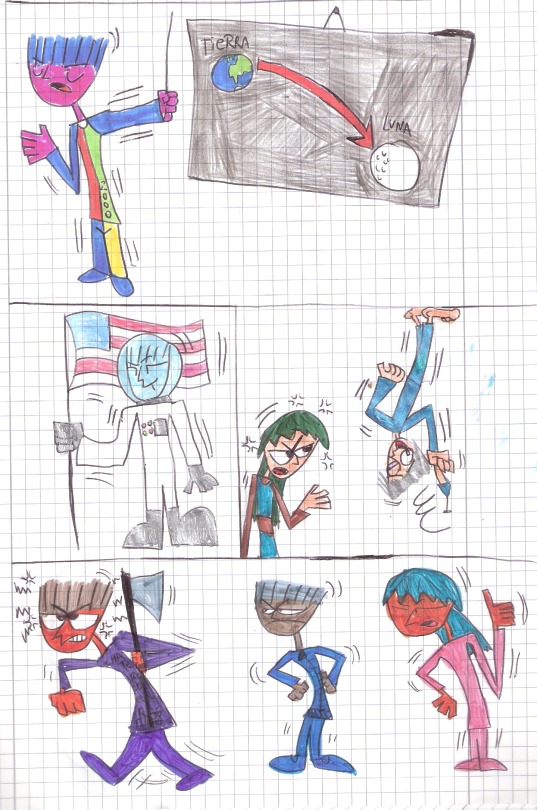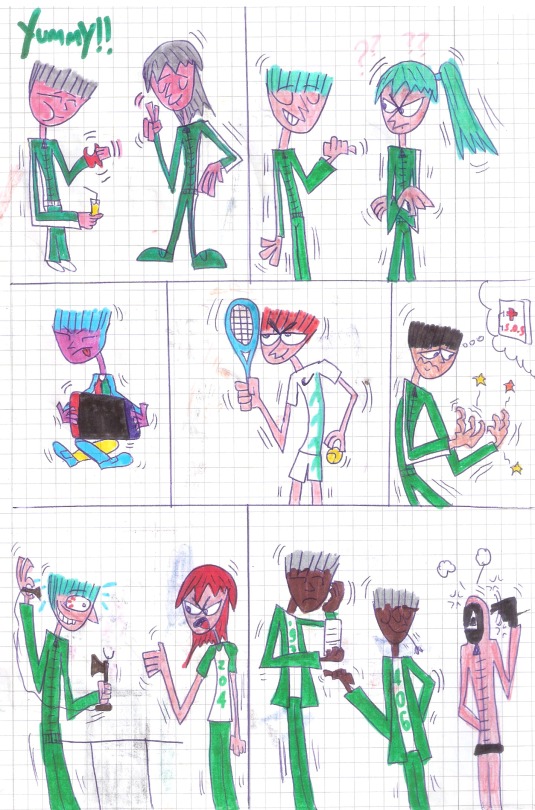#đàn koto
Explore tagged Tumblr posts
Text

Amidst the notes Of my koto is another Deep mysterious tone, A sound that comes from Within my own breast. Trong giữa những nốt nhạc Cây đàn tranh của tôi Một giọng trầm bí ẩn, Một âm từ trong tận Lồng ngực của chính tôi. - Yosano Akiko
English Translation: Kenneth Rexroth Dịch Việt: Bạt Xứ Art: Harunobu Suzuki
#japanese art#japanese poetry#short poem#tanka#aesthetic#lovequotes#japan#writing#painting#creative#poetry#love#music#koto#literature#japanese#lovepoems#shortpoem#japanesepoetry#tinhyeu#tho#cuocsong#yosanoakiko#kennethrexroth
3 notes
·
View notes
Text
Oiran - Yuujo - Geisha
Oiran - Yuujo - Geisha.
1, Lại một cuộc nhầm lẫn của hơi bị rộng của giang cư mận và thế giới hình ảnh.
Hôm trước đọc đâu topic kể về chuyện "hình xăm geisha". Đại khái có bảo là sau khi xăm lên cảm thấy mình càng xinh ra, rồi các cô gái ngành hành nghề bên mình cũng hay xăm hình này.
Mình vẫn nghĩ là Geisha các nghệ nhân này thì hình như rất ít xăm mình mà, sao lại có hình xăm được? Với lại Geisha đa phần là kiểu nghệ nhân, sao các cô gái bán hoa bên mình lại xăm?
Thế là mình lên trên pinterest search "geisha tattoo" để xem có cái gì. Thế là được mớ kết quả như hình chụp. Người ta không rõ ràng, không biết và dẫn đến nhầm lẫn giữa Geisha và Yuujo và cả Oiran nữa.
Cứ hình ảnh cô nàng nào mặc kimono và cắm mớ dao lên tóc, búi cao thì auto là geisha hết. Khum phải các bác ơi.
2, Geisha là "Nghệ Giả" tương đương với nghệ nhân. Là phụ nữ và bán nghề. Cái người ta học được từ khi còn nhỏ, thấm nhuần vào trong cốt cách và đưa ra bên ngoài - chính họ gần như là một tác phẩm nghệ thuật - và họ kinh doanh dựa trên tài năng như: đàn, ca, thơ, họa.... Thậm chí tham gia vào các hoạt động kiểu như là đàn ca tài tử bên mình ấy.
Đi chung với Geisha là Maiko. Maiko cũng là Geisha nhưng đang tập sự. Nào làm lễ trưởng thành được, tốt nghiệp được thì chính thức thành Geisha. Bài này mình không nói về Maiko.
3, Yuujo hay Jorou - Nữ lang: đây mới gọi là kỹ nữ tiếp khách aka gái điếm ấy ạ. Các cấp của gái điếm phân thành nhiều tầng lớp: Tayuu, Yuujo hay Asobime, Yuuna, .... . Sau tựu chung còn Oiran - nhưng giới này về sau thoái hóa vì quá cồng kềnh trong khâu tiếp khách, còn nguyên nhân khác là do chính quyền hạn chế dần.
4, OIRAN - rất hay bị nhầm hình tượng với GEISHA - Oiran kỹ nữ cao cấp. Vì cao cấp nên khách hàng của Oiran cũng cao cấp và đặc biệt nhiều tiền, thừa tiền. Chủ yếu các giới quý tộc, samurai thì mới có khả năng tiếp cận.
Chung là trong giới kỹ nữ chia nhiều tầng, thì tầng Oiran là tầng xịn nhất, hiện giờ thì không còn nữa rồi, vì nhiều lý do lịch sử mà Geisha có thể coi như là thay thế đội hình Oiran này.
5, Mình đi chính vào các đặc điểm mà mọi người hay lẫn:
Geisha: - Trang phục đơn giản tối màu - Đầu tóc đơn giản, tóc ít cài cắm, búi gọn. - Không lộ ngón chân, - Đi guốc gót thấp bọc tất. Oiran: - Trang phục sặc sỡ, thường mang tông màu nóng. - Cắm một rừng lược với trâm trên đầu (thường oiran có bộ 8 trâm cài, xòe như 2 cánh quạt ấy). - Guốc geta cao phải 15-20 phân. - Đi chân trần (không bọc tất, chứ không phải đi chân đất nha).
6, Điểm chung của 2 giới này thì để có thể "xuất sư" đó là đảm bảo tài năng trong giao tiếp - đúng vại, tiếp khách mà EQ thấp là xong rồi. Tài năng trong các lĩnh vực nghệ thuật: cầm kỳ thi họa, đàn shamisen, đàn koto, học ngâm thơ, cắm hoa, rồi kiến thức rộng, ca hát các thứ.
Các cô gái đều được đào tạo từ lúc nhỏ, lớn thì tùy trường hợp đâu hay rớt ra sao rồi người thì xuất sư, người thì về quê lấy chồng, người thì ở lại làm việc cho nơi đào tạo đó.
Nhưng mà quý vị xin đừng nhầm giới Geisha với Oiran, sai trái lắm.
Bên cạnh đó, việc thu hẹp các giới này nên giờ chúng ta chỉ có thể thấy oiran ở các lễ hội, hoặc các hoạt động văn hóa. Cả Geisha cũng vậy. Mặc dù các trường học dạy Geisha thì vẫn còn, nhưng khả năng hoạt động, cũng như mức độ rầm rộ thì giảm nhiều.
7, Đối với mình, các nữ Geisha như là một tác phẩm nghệ thuật - từ dáng vẻ, cách ăn nói, cư xử khéo léo và đặc biệt là giá trị văn hóa, họ chính là những tác phẩm nghệ thuật cần được bảo tồn.
Bằng việc không tiếp khách, không có phát sinh các mối quan hệ tình dục, việc giữ được sức khỏe, một geisha có thể hoạt động trong nghề tới độ tuổi về hưu ~ 65 tuổi.
Còn thường bên kỹ nữ tuổi thọ không bền lắm.
0 notes
Photo










Casting: Kono Oto Tomare ver Live action.
J4f
Fakenews
fanmade
fiction.
----
Sau 3 năm coi đi coi lại 2 mùa anime Kono Oto Tomare vẫn chưa chờ được season 3 nên tui làm cái này thỏa mãn đam mê.
Giới thiệu sương sương về truyện lẫn phim:
CLB đàn Koto trường phổ thông Tokise điều hành bởi Kurata có nguy cơ giải tán do không tìm đủ thành viên.
Chika Kudo - có "danh tiếng" là thành phần bất hảo từ cấp 2, mới đầu quân cho clb koto không biết vì nguyên nhân gì.
Cô bé Satowa Hozuki bị lùa ra khỏi gia tộc Hozuki nhưng vẫn đến tham gia vào CLB Koto này, ai cũng đồ rằng cô ấy sẽ từ bỏ koto nhưng không.
Bộ 3 hề hước: Kouta - Sane - Sakai vì Chika mà quyết tham gia cho đủ slot. Và cô nàng đỏng đảnh Hiro Kurusu tham gia nhằm mục đích quậy cho vui (ban đầu). Anh thầy hướng dẫn vô lương tâm Takinami nhưng xem mới thấy bộc lộ như nào.
7 thành viên với nhiều mục đích, nhiều câu chuyện đằng sau cùng hướng tới giải toàn quốc. Anime thì giải quyết xong chuyện tranh được một slot từ giải tỉnh đến giải quốc gia. Manga thì đang trên con đường luyện tập chuẩn bị cho giải quốc gia.
Nếu chuyện đơn giản vậy thì sao mà tui mê? Thực sự là nét vẽ shoujo này quá sức phổ thông luôn. Kiểu cầm cái tag shoujo là được 1 mớ truyện như này. Nhưng mà... cảm giác đọc truyện này nó dễ thương lắm, tình cảm các nhân vật là phần phụ cho chuyện họ thực hiện giấc mơ (vì bị bạn bè kéo theo, vì lời hứa với gia đình.... .
Nhiều kiến thức về đàn koto cực kỳ hay ho, âm nhạc trong anime chính là nguyên nhân để tui đọc manga. Không quá khúc chiết như những bộ drama tay ba tay tư, một ít hint giữa mấy bạn trai và bạn gái - nhưng nó chỉ nằm ở mức dễ thương thôi. Và hành trình chinh phục giải quốc gia mới là vấn đề cả nhóm hướng tới.
Nên là nếu ai cần một ít sự trong sáng cho cuộc đời, hoặc để hồi tưởng lại thời cấp 3 với những tình cảm ngây thơ, và hành trình đi học của mình, thì tui nghĩ các chế nên xem cái này.
Còn đừng hỏi về việc sao mà học sinh cấp 3 có thể sắm và chơi mấy cây đàn có giá từ vài ba chục trịu trở lên nha, sao học sinh cấp 3 không lo học hành, lo chơi nhạc cụ các kiểu... thì truyện nó thế, đừng hỏi tui, tui hỏng biết.
=====
Về dàn cast:
Itsuki Fujiwara - Chika Kudo
Ryota Katayose - Kurata Takezou
Kanta Santo - Mizuhara Kouta
Weesa (Psychic Fever) - Adachi Saneyasu
Yamamoto Shogo - Sakai Michitaka
Alan Shirahama - Takaoka Tetsuki
Akiyama Shintaro - Takinami Suzuka Sensei
Onoyuka Hayato - Taishin Yamamoto sensei
Makoto Hasegawa - Natsu Momoya
Reo Sano - Atsumu Yoshinaga
===
Yonamire Rui - Kanzaki Mio
Zin Sakamoto - Uzuki
===
Minami Hamabe - Satowa Hozuki
Fuka Koshiba - Hiro Kurusu
(Đề cử)
==========-
Tiêu chí lần này là:
TRẺ!
- Độ tuổi các nhân vật là phải trẻ, nên tui chọn các bạn trẻ, mới, gương mặt có sẵn phù hợp.
- Các anh thầy xin phép pick gekkidan EXILE. -
- Hai nhân vật nữ, do không rành dàn nữ bên LDH nên đề cử 2 cô gái gần đây tui rất thích, đề cử vui thôi.
- Chọn trai nhà LDH vì tui cũng chỉ biết các bạn trẻ ở đây. (trai nhà khác không rành lắm).
- Anh chàng hội trưởng Kurata thông tin chỉ cao 1m68, và Chika cao 1m78. Nhưng hình vẽ thì tui thấy lúc nào cũng xêm xêm nhau, nên tui tưởng Kurata cao hơn. Mà lỡ rồi nên cho 2 bạn trẻ vào luôn.
- Ban đầu phân vân giữa Kazuma và Itsuki, thì ... cảm giác Itsuki phù hợp hơn tẹo. Nên là dàn vocal của RMPG lần này xin phép từ chối.
=====
Cuối cùng, dàn cast này vui là chính thôi nha quý zị.
7 notes
·
View notes
Text
5 Bộ Truyện Harem Khiến Bạn Đê Mê Với Dàn Mỹ Nữ
Còn gì bá hơn việc có cả một dàn hoa xinh tươi luôn “kề vai sát cánh” như các anh main siêu may mắn trong 5 bộ truyện harem mà TruyenVN sắp giới thiệu dưới đây!
Kawaiikereba Hentai Demo Suki Ni Natte Kuremasu Ka?

Kiryuu Keiki, một học sinh trung học bình thường như bao người, thanh niên này đã FA hết mười mấy mùa lá rụng. Một hôm nọ, Kiryuu cùng 2 người bạn nữ xinh xắn cùng lớp Koga Yuika, Nanjou Mao và cô em gái Kiryuu Mizuha, nhận lời Tokihara senpai đến phụ giúp dọn dẹp phòng của câu lạc bộ thư pháp.
Khi công việc đã hoàn tất, Kiryuu đang định đi về thì phát hiện ngay trên bàn có một bức thư tình và… một chiếc quần lót! Mừng rớt nước mắt vì Kiryuu cuối cùng có cơ hội thoát kiếp cô đơn, nhưng mà ai đã gửi những thứ này cho anh? Trong 4 người con gái ấy ai là người đã bí mật bày tỏ tình cảm với Kiryuu?
Truyện harem Kawaiikereba Hentai Demo Suki Ni Natte Kuremasu Ka? là hành trình gian nan của Kiryuu trong việc đi tìm chủ nhân của bức thư tình và chiếc quần lót.
Kimi No Koto Ga Dai Dai Dai Dai Daisuki Na 100-Ri No Kanojo

Bộ truyện harem Kimi No Koto Ga Dai Dai Dai Dai Daisuki Na 100-Ri No Kanojo là minh chứng cho câu nói “đẹp trai không bằng chai mặt”. Thanh niên sinh hoạt tốt Aijou Rentarou là người có đam mê tỏ tình, mục tiêu này được bắt đầu từ hồi cậu chàng chỉ có 8 tháng tuổi, tính đến nay Rentarou đã tỏ tình đến lần thứ 100, nhưng hiển nhiên vẫn bị từ chối như 99 lần trước đó.
Chán nản cuộc đời, cậu chàng đã đến đền thờ và cầu Thần tình yêu cho cậu thoát kiếp FA. May mắn ông trời không phụ lòng người, ước nguyện của cậu đã được nghe thấy khi thần tình yêu nói rằng cu cậu sẽ có 100 người bạn tâm giao. Tin được hay không, dàn harem với 100 cô nàng xinh xắn để Rentarou tha hồ lựa chọn! Nhưng mà, Rentarou phải chọn nàng nào đây!?
Kuro Homura No Sen Otome

Truyện harem Kuro Homura No Sen Otome là câu chuyện về những nữ sinh bá đạo nhất và cũng bốc lửa nhất ở trường tư thục Sumimoto. Trong ngôi trường này, võ thuật từ lâu đã là một phần không thể thiếu trong sự phát triển thể xác và tâm hồn của học sinh. Khắp nơi trong trường học, đâu đâu cũng thấy những học sinh không ngừng chiến đấu với nhau để rèn luyện bản thân. Và trong số họ, một vài người có thể tự trang bị lên mình những những ngọn hắc hỏa – Kuroko.
Suzushiro Rintaro, tân sinh viên đến từ một trường trung học đã tham gia vào trận chiến ngay ngày đầu bước chân vào ngôi trường hào khí ngút trời này, và buộc phải trở thành người làm chứng cho trận đấu. Ngày ngày bị vây xung quanh bởi dàn harem có bộ ngực căng tròn, Rintaro phải làm thế nào?
Monster Musume No Iru Nichijou

Bộ truyện harem Monster Musume No Iru Nichijou là câu chuyện thú vị giữa anh main và dàn harem nhân thú của mình. Kurusu là một tình nguyện viên tham gia vào chương trình hỗ trợ những nhân thú hòa nhận với thế giới loài người. Cô gái nửa người nửa rắn Miia là đối tượng mà Kurusu phụ trách.
Nàng rắn Miia siêu nóng bỏng khiến Kurusu nhiều lần lâm vào “thế bí” dở khóc dở cười. Nhưng không may là đạo luật chống lại việc lai giống vô cùng hà khắc nên Kurusu phải khổ sở tiết chế. Tất nhiên đã là một bộ truyện harem thì đâu thể chỉ có mỗi mình Miia, Kurusu vướng vào vận đào hoa với nàng nhân mã xinh đẹp và một cô gái người chim hở bạo.
Cuộc sống của Kurusu bỗng chốc trở nên vô cùng nhộn nhịp khi được mỹ nữ vây quanh nhưng lại phải kiềm chế bản năng đàn ông của mình. Liệu Kurusu có vượt qua được thử thách gian khổ này?
Uragirareta S Rank Boukensha No Ore Wa, Aisuru Dorei No Kanojora To Tomoni Dorei Dake No Harem Guild O Tsukuru

Đây là câu chuyện về một người đàn ông, người đã dâng hiến tất cả cho nô lệ của mình. Ở thế giới này, những mạo hiểm giả là người có sức mạnh phi thường, đặc biệt là những người có cấp độ S, họ hoàn toàn có khả năng dẫn dắt người khác và thay đổi cả thế giới.
Trong các mạo hiểm giả cấp độ S, có một người đàn ông tên Egil Volt. Anh ta không thích chế độ nô lệ, nhưng vẫn bị bạn mình lôi kéo đến một cuộc đấu giá. Tại đây, anh tìm thấy nô lệ đầu tiên trong dàn harem sau này của mình.
Mỗi một bóng hồng đều có vẻ đẹp riêng biệt, tỏa ra sức hút khó cưỡng. Bạn đã tìm được hình mẫu chân ái của mình trong số những mỹ nữ ở các bộ truyện harem vừa giới thiệu bên trên chưa?
source https://truyenvn.com/tin/de-me-voi-dan-my-nu-trong-5-bo-truyen-harem.html?utm_source=rss&utm_medium=rss&utm_campaign=de-me-voi-dan-my-nu-trong-5-bo-truyen-harem
2 notes
·
View notes
Text
Án Mạng ở Công Quán (Death at an Old Mansion [本陣殺人事件], 1975)

Kindaichi Kousuke là một trong những thám tử nổi tiếng nhất làng văn học Nhật Bản. Thật ra, tôi biết cháu nội “ăn theo" Kindaichi Hajime của ông trước nhờ manga (”ăn theo" vì Hajime nhận là cháu nội của Kousuke, nhưng tác giả của Kousuke không nhận bà con). “Án mạng ở Công quán" là tiểu thuyết đầu tay của Yokomizo Seishi, cũng là khởi đầu sê-ri 77 quyển về thám tử Kindaichi, được những người yêu thích truyện trinh thám Nhật bình chọn là một trong những vụ án phòng kín hay nhất. Với Nakao Akira trong vai vị thám tử, đạo diễn bởi Takabayashi Yoichi, “Án mạng ở Công quán" là bộ phim đầu tiên trong bộ ba phim chuyển thể từ tiểu thuyết của Yokomizo Seishi.
Bắt đầu từ điểm kết phim, Kindaichi đến công quán để thăm Suzu (Takazawa Junko) thì biết cô vừa mất và đang chuẩn bị hạ huyệt. Vừa tròn một năm ngày anh gặp cô, thời điểm đó, anh cả của Suzu là Kenzo (Tamura Takahiro) vừa kết hôn với Katsuko (Mizuhara Yuki), một phụ nữ trẻ mà ông yêu, mặc kệ sự phản đối quyết liệt từ gia tộc. Trong đêm động phòng, cặp đôi đã bị sát hại dã man trong một căn hộ riêng kề bên toà nhà chính. Các cửa đều được khoá chặt bên trong và không có hung khí tại hiện trường. Dấu vết duy nhất là ba dấu tay dính máu của ai đó mang “tsume" (một dụng cụ đeo trên ngón tay khi khảy đàn koto). Kindaichi, lúc này đã là thám tử nổi danh, được chú của Katsuko là Ginzo (Kaga Kunio) mời đến để hỗ trợ điều tra.
Nguyên tác tiểu thuyết được xuất bản vào năm 1946, lấy bối cảnh thời tiền chiến 1937, khi quan niệm nhân sinh rất khác so với thời điểm làm phim (1975), chứ đừng nói chi bây giờ (2020). Gia tộc Ichiyanagi sống trong một biệt thự lớn (không phải “công quán" - khu vực nghỉ chân của hoàng gia thời Edo, như trong tên tác phẩm), là gia tộc giàu có và danh vọng bậc nhất trong khu vực. Ngược lại, Katsuko xuất thân từ một gia đình làm nông “nghèo hèn", khiến nhiều thành viên Ichiyanagi tin quyết định kết hôn của Kenzo là nỗi sỉ nhục to lớn. Học giả Kenzo đột nhiên kết hôn, đã phá vỡ truyền thống gia tộc.
So với phương Tây, trong các tiểu thuyết trinh thám Nhật, động cơ gây án ít được đề cập đến hơn là các mối quan hệ giai cấp.
zzzzzzzzzzzzzzzzzzz
Má, xạo l** đủ rồi. Nói chung là nguyên nhân gây án chỉ có 2 chữ “trinh tiết" với “mặt mũi". Em Katsuko, gíao viên lịch sử sơ trung xinh đệp, đã có 1 đời bồ là con trai nhà bác sĩ. Thằng già Kenzo độc đoán, gia trưởng, khinh miệt người kém hơn, 40t mới biết yêu, tưởng hốt được thiên thần trong trắng, ai ngờ... Sợ mất mặt nên bày mưu giết vợ tự vẫn, lại sợ người ta nói ra nói vô nên giả bị giết hohoho.
2 notes
·
View notes
Photo






The koto (箏) is a Japanese stringed musical instrument derived from the Chinese zheng, and similar to the Mongolian yatga, the Korean gayageum, and the Vietnamese đàn tranh. The koto is the national instrument of Japan. (Wikipedia)
@awash2004
5 notes
·
View notes
Text
Prince!AU Johnny
Johnny came home ;; #WelcomeHomeJohnny
1835 words | Fluff
Where the prince sneaks out to be come a street musician, not knowing an assassin was on his tail
2nd prince of the dynasty, knows it’s not his responsibility to be king so tend to eff around a lot (but like not actually effing anyone)
the only one in the family with the same mother as the crown prince, but vibes so much better with his younger bros: Mark, Doyoung, and Jaehyun
he’s responsible enough to lead an army and has been entrusted with the title of General the last time the country went to war, but due to war PTSD he decided it wasn’t a life for him–prince Youngho is a pacifist
Prince Yuta however loves the art of war so he took over. When Yuta left for battle Youngho gave him a handkerchief and cried while wishing him good luck
Youngho: come back to me my prince
Yuta and Mak: bro ur embarrassing
likes the art of tea, often has tea party and invites all the local maids and courtesans to have tea with him.
To others it looks like a harem but prince Youngho knows how hard they work and how rare it is for them to just sit and have some time for themselves, so forget what everyone thinks as long as he’s doing his job as a good master to them
a true romantic, loves poetry and a genius at gayageum (12-strings instrument, similar: the Chinese guzheng, the Japanese koto, the Mongolian yatga, and the Vietnamese đàn tranh)
all the girls love lining up outside his open chamber to listen to him play at sunset
even the male servants and soldiers sometimes come to see him play because he’s just that good, the emotion he delivers varies from soft melodic lullaby to vibrantly dynamic compositions
Prince Doyoung: maybe you’re better than me at one thing
he doesn’t play outside the castle!! because he’s afraid he’s gonna get caught, followed, or hunted by assassins since the country has a lot of enemies
But prince Youngho loves sneaking out with prince Jaehyun whenever their distant cousin from neighboring kingdom Ten comes to visit.
The first time was for fun. He plays the gayageum in a disguise named Johnny, out in a small public space, and he got so immersed that by the time he was done there was already a crowd gathering
and he loves the feeling of anonymity so much he keeps sneaking out even when his cousin wasn’t visiting
you were hired by the mother of one of the younger princes to assassinate Prince Youngho. You’re a pay-by-the-job kinda assassin and you just take the information from an anonymous bidder and carry out your job so you really don’t know who your real employer is, and they don’t know your face or anything either.
You were given the assignment to kill Prince Youngho, a pity really, you heard he was a good-natured man with no vie for the throne, but a job is a job and you figured once you get into the castle you’ll probably hear some bad things about him anyway, and maybe what he looks like you honestly have no idea since you were never given an assignment to kill royalty of THIS country before
this is the first time you’ve been in this kingdom tbh, but you made a friend already! the guy called Johnny that plays the gayageum first spoke to you after you spaced out listening to him play, and you offered to pay him bc street musicians have it hard ya know just playing day by day for a meal
and he graciously took the money but used it to buy you both food, which you were surprised by
Johnny was your first friend and throughout your time with him you really didn’t want to lie about why you were in town, but no one wants to be friend with an assassin
until one day on one of your scouting of the castle, you bumped into Johnny!
and you definitely notice how he was dressed in the finest silk robe of all the lands, even if he looks like he’s wearing chamber garment and taking a night stroll before bed
“Hey what a pleasant surprise! although not really, what are you doing here?” he inquired after pulling you over to a blind spot from the guards
you didn’t want to lie to Johnny again, but you didn’t know how to react after finding out that he was, in fact, probably someone of royalty seeing as he’s in the castle wearing very expensive robe in the middle of the night
but you couldn’t, he was definitely Johnny as he recognizes you, he was your friend, and royalty or not, you couldn’t do that
“Johnny listen, you need to get as far away from here as possible 3 nights from now. I’m… I’m telling you this since I trust you with my life.”
Johnny: okay thanks but what why?
but you don’t get to explain further because a guard was approaching and you escaped when Johnny turned around to distract them
the next 3 days you don’t see Johnny. he missed his weekly playing at the public square and you really don’t know why, he’s never done this for the past 2 months you’ve known him
on D-day aka the day you’re supposed to kill prince Youngho
you still don’t know how the heck the man looks like because the one infiltration to find out his face was interrupted by your friend Johnny, who may or may not possibly be a prince and brother of your target. The thought that you’ll have to kill one of his brothers kinda hurt you, but if he’d listened to your warning, he should be far away from the castle tonight
from the intel you gather, Prince Youngho is usually alone in his chamber on one specific day of the week (today), and you know where his chamber is so you made your way towards there, patiently waiting for the wee hour so you can take him out
what you don’t expect is Johnny’s friend Jeffrey to show up
he was accompanied by another person in robe, someone he called Doyoung, also strikingly handsome like the rest of the people in this castle apparently. Goddamn you really hit the jackpot with meeting all the princes did ya
Doyoung: this is ginseng tea, remember to make him drink it all, Youngho said he’s been getting these weird heartburns lately that won’t go away
Jeffrey: don’t worry I’ll force it down his throat if he doesn’t hehe
Doyoung: Jaehyun.
Jeffrey/Jaehyun: i’m kidding
oh no… oh man.. you really liked Jeffrey you rEALLY do he gets all your memes! but if he is indeed prince Jaehyun, then intel has it he was very close with prince Youngho :( oh no he’s going to be so devastated..
you’re getting sad on the job which is very unlike you.. But you know this is what happens when you try to get close to people as assassin. it hurts.
but what hurts the most is the voice that calls out to Jeffrey and prince Doyoung
prince Youngho emerged from his chamber.
You feel like the world fell upon you, heavier than when you were eight and thrown out of the house by your foster family because you didn’t “belong,” heavier than the boulder your master dropped on your shoulder when you were twelve and called it “mental training,” heavier and more painful than when Johnny smiled and you know it was a smile reserved solely for you
the shock hit you harder than it should, and as you tried to cope with the reality that you would have to kill Johnny, you lost your bearing on the roof and fell
Doyoung, stepping in front of Jaehyun: did you hear that?
Jaehyun: yes, but hyung why do you have a sword strapped to your waist we’re in nightgowns?
Youngho: call the guard, we may have intruders
Jaehyun: hey… isn’t that… someone we know? Hyung look
You got up as fast as you fell and tried to flee, but Youngho was faster, and soon he was close enough to grab your arm before you got the chance to escape
Doyoung, sword drawn across your throat: who are you?
Jaehyun: hyung relax, it’s our friend
you don’t know what to make of that but for now you gotta go, can’t risk another prince see your face good god you’re a terrible assassin
So as Youngho released your arms, you bolted into the shadows and parkour your way out of the castle
the next day you see Johnny at the same public space where he performs, except it’s not one of his performing day and he’s just there in disguise
and Jeffrey nowhere in sight but next to him is prince Doyoung, the scarier prince you’ve come to meet yesterday
Johnny: hey! glad you’re here, this is um.. you know who he is but call him Charlie
Doyoung eyes you suspiciously before turning back to Johnny: can’t believe we’re talking to an assassin that was sent to kill you.
Doyoung was right. You don’t know what to say because there’s nothing to say. Your relationship or friendship whatever it was has ended and you were sure this is the supposed goodbye before you take off. It was nice, albeit awkward, but less awkward thanks to a third person being there, but you weren’t used to goodbye. The life of an assassin didn’t permit you any goodbyes.
Johnny: Charlie im only taking you with me because you were worried for my safety. Now that we’ve established that, please go entertain yourself at the market. Jeffrey and Jason are waiting for you (Jason = Jeno)
Johnny, after Doyoung skedaddled: work for me.
you: what
Johnny: look, i know you were hired to assassinate me, but i don’t care. work for me or just stay here, don’t leave or.. or i will search the world to find you
You, an awk at emotions: ….dude can you even leave the castle as the prince? like?
Johnny: okay sHUT UP we do have strict rules regarding that but my pOINT IS. I like you, stay with me.
His words were sincere, there’s not a hint of sarcasm in his voice, and no one has ever said something like this to you–especially not after you tried to kill them. You didn’t think you deserve Johnny or the idea of having a life where you can settle down.. but as you look at him, look at the sincerity and purity in his eyes, you know he meant it.
you nodded right before he pulled you to an embrace and attempted to swing you around
Jeno: ah look there’s Young—Johnny hyung!
Doyoung: don’t run Jason hold my hand
Youngho, under his breath: damn that Doyoung always showing up at the most crucial moment
you laughed as he lets you go, but not before promising him that you’ll stay, as a regular village girl or as his new employee, you’ll stay in the kingdom for him
#he cried#that hurts me he doesn't cry a lot#johnny has my heart im so proud of him#johnny#johnny au#johnny scenarios#nct#nct127#nct au#nct scenarios#youngho#seo youngho#youngho au#youngho scenarios#fluff#johnny fic#nct fic#johnny fluff#nct fluff
30 notes
·
View notes
Text
Đặc sắc món bánh Yatsuhashi của cố đô Kyoto, Nhật Bản
Đặc sắc món bánh Yatsuhashi của cố đô Kyoto, Nhật Bản
Ngoài những món như sushi, ramen, miso,… thì Yatsuhashi là một món tráng miệng đặc sắc của người Nhật tại cố đô cổ kính Kyoto.
[rpi]
Ẩm thực Nhật Bản vốn nổi tiếng với những món ăn có hương vị tinh tế và bánh Yatsuhashi là một trong những món như thế. Yatsuhashi là món ăn đường phố nổi tiếng nhất Kyoto, có hình tam giác kèm nhân bên trong, dẻo và mềm như bánh mochi.
Yatsuhashi có hình tam giác…
View On WordPress
0 notes
Text




Ese anciano,o el abuelo de la calle de Sergio lo conocía a un Fan suyo de Jashin-chan Dropkick,pero le daba un poquito de asco,mas bien leer los libros sobre las guerras de Rusia y Ucrania y astronautas americanos,rusos,chinos y japoneses,y además…¡Fah!…Españoles
A continuacion veremos la cancelación del concierto en Cullera debido a los fuertes vientos,donde murió el joven
That old man, or the grandfather from Sergio's street, knew a fan of his from Jashin-chan Dropkick, but he was a little disgusted, rather reading the books about the wars in Russia and Ukraine and American, Russian, Chinese astronauts and Japanese, and also…Fah!…Spanish
Next we will see the cancellation of the concert in Cullera due to strong winds, where the young man died
Ce vieil homme, ou le grand-père de la rue de Sergio, connaissait un de ses fans de Jashin-chan Dropkick, mais il était un peu dégoûté, lisant plutôt les livres sur les guerres en Russie et en Ukraine et les astronautes américains, russes, chinois et japonais, et aussi…Fah!…Espagnol
Ensuite, nous verrons l'annulation du concert à Cullera en raison de vents violents, où le jeune homme est décédé
Dieser alte Mann, oder der Großvater aus Sergios Straße, kannte einen seiner Fans von Jashin-chan Dropkick, aber er war ein wenig angewidert, las lieber die Bücher über die Kriege in Russland und der Ukraine und amerikanische, russische, chinesische Astronauten und Japaner, und auch...Fah!...Spanisch
Als nächstes sehen wir die Absage des Konzerts in Cullera wegen starker Winde, wo der junge Mann starb
Quel vecchio, o il nonno della strada di Sergio, conosceva un suo fan di Jashin-chan Dropkick, ma era un po' disgustato, leggeva piuttosto i libri sulle guerre in Russia e Ucraina e astronauti americani, russi, cinesi e giapponesi, e anche…Fah!…spagnolo
Successivamente assisteremo alla cancellazione del concerto di Cullera a causa del forte vento, dove il giovane è morto
Aquele velho, ou o avô da rua de Sergio, conhecia um fã seu de Jashin-chan Dropkick, mas ficou um pouco desgostoso, lendo os livros sobre as guerras na Rússia e Ucrânia e americanos, russos, astronautas chineses e japoneses, e também…Fah!…Espanhol
A seguir veremos o cancelamento do show em Cullera devido aos fortes ventos, onde o jovem morreu
Ông già đó, hay cụ ông ở phố Sergio, biết một người hâm mộ ông từ Jashin-chan Dropkick, nhưng ông hơi ghê tởm, thay vì đọc những cuốn sách về các cuộc chiến tranh ở Nga và Ukraine và các phi hành gia Mỹ, Nga, Trung Quốc và Nhật Bản, và cả…Fah!…tiếng Tây Ban Nha
Tiếp theo, chúng ta sẽ thấy việc hủy bỏ buổi hòa nhạc ở Cullera do gió mạnh, nơi người đàn ông trẻ tuổi đã chết
その老人、またはセルジオの通りの祖父は、邪神ちゃんドロップキックの彼のファンを知っていましたが、ロシアとウクライナでの戦争とアメリカ、ロシア、中国の宇宙飛行士と日本人についての本を読ん���、少しうんざりしていました。そしてまた…ふぁっ!…スペイン語
次に、若い男が亡くなった強風のため、クリェラでのコンサートがキャンセルされたことがわかります
Sono rōjin, matawa serujio no tōri no sofu wa, jashin-chan doroppukikku no kare no fan o shitte imashitaga, Roshia to Ukuraina de no sensō to Amerika, Roshia, Chūgoku no uchū hikō-shi to nihonjin ni tsuite no hon o yonde, sukoshi unzari shite imashita. Soshite mata…Fu ~a~tsu!…Supeingo-ji ni, wakai otoko ga nakunatta kyōfū no tame, kuryera de no konsāto ga kyanseru sa reta koto ga wakarimasu
#pino#angel killer#jashin chan dropkick#hi hi puffy amiyumi#russia ukraine war#russia ukraine#russia#ukraine#anime overdrive#blood#guro#gore#anime gore#lha enterprises#master of gore#humor sangriento#mediamasters#globetrotter media#at anime gore & em gore by mediamasters#masters of gore#robot jones#tooncast#jewelpet dj splash
0 notes
Link
Vì các đàn chị đều đã tốt nghiệp cả nênTakezou trở thành thành viên duy nhất của câu lạc bộ đàn Koto (một loại đàn dây truyền thống của Nhật Bản). Quy luật bất thành văn: Mỗi câu lạc bộ phải có từ 2 thành viên trở lên mới được phép hoạt động! Giờ đây đứng trước nguy cơ phải đóng cửa câu lạc bộ, Takezou-chàng thục nữ ủy mị, tự kỷ, không bạn bè- phải xoay sở ra sao để tiếp tục duy trì câu lạc bộ!?
0 notes
Text
Koto (nhạc cụ) – Wikipedia tiếng Việt
Koto (nhạc cụ) – Wikipedia tiếng Việt
Koto Koto (tiếng Nhật: 琴 hay 箏; Hiragana: こと , đôi khi gọi là Sō, là một loại đàn tranh truyền thống của Nhật Bản. Bạn đang đọc: Koto (nhạc cụ) – Wikipedia tiếng Việt Trục trặc khi nghe tập tin âm thanh này? Xem hướng dẫn. Một nghệ sĩ đang chơi đàn koto Thời cổ đại[sửa|sửa mã nguồn] Cây đàn tranh Koto nguyên lai vốn có từ thời cổ ở Nhật gọi là Wagon ( 和琴 – Hòa cầm ) hoặc Yamato-goto ( Đại Hòa…

View On WordPress
0 notes
Photo





The koto (箏) is a Japanese stringed musical instrument derived from the Chinese zheng, and similar to the Mongolian yatga, the Korean gayageum, and the Vietnamese đàn tranh. The koto is the national instrument of Japan. (Wikipedia)
@awash2004
2 notes
·
View notes
Photo

@sakisakuramen -1st November 2017-
The cake, 🍰 has an excellent fluffy texture which is compatible with the cream which goes beyond delicious 🙋
Once again, thank you very much for coming out to support Sakiyama Tsubasa with Sakura Men’s debut✨
After this, is the NicoNico live broadcast distribution! 😄
Come and watch✨[1]
From Yocchan - In charge of the Koto [2]
NOTES:
[1] The NicoNico live has already been broadcasted. Those with a premium membership can possibly watch it again by doing it as a timeshift (which lasts 30 days from the second you watch it from the timeshift) or waiting for it to be put into the archives for future watching (which isn’t certain at this stage). [2] As explained earlier, the Koto is the instrument Yocchan uses which is a traditional Japanese stringed musical instrument derived from the Chinese zheng, and similar to the Mongolian yatga, the Korean gayageum, and the Vietnamese đàn tranh.
Source: HERE
#Sakiyama Tsubasa with Sakura Men#Sakura Men#Ookawa Yoshiaki#NicoNico Live Appearance#Twitter#Translation by me xD#Tsubasa's face though XD
12 notes
·
View notes
Note
Hi. Could you please tell us a bit more about the musical instruments only taught in Miyagawacho like biwa, kokyu and koto? Who teach them to geiko and maiko? The same teachers who teach the Tayu? There are some photos of recitals of geimaiko playing those instruments and I love it, specially koto. Thanks for your beautiful work.
The istruments stemming from Oiran-tradition that is still taught in Miyagawacho are the koto and the kokyū, the biwa is not taught there. They all are, however, still studied by Tayū today. Miyagawacho is the only kagai in Japan that still teaches the kokyū.
The Oiran and the Tayūstudied and the latter still studied, the arts of the nobility, which include but are not limited to koto and biwa, while the Geisha studied and still study the arts of the common people, which include but are not limited to nagauta, shamisen and kabuki.
As for who teaches the Geiko and Maiko of Miyagawacho in the playing of the koto, I’m not sure, and I also don’t know if they are the same teachers who teach the koto to the Tayūor who the Tayūlearn it from. Maybe someone else can answer this question, I’m not very well-versed in that area.
The koto is often called the “Japanese harp” in the west, as the sound and construction are somewhat comparable. The koto belongs to the zithers, which are stringed instruments consisting of one or several strings stretched over the instrument’s body, which also functions as a soundbox, or has a soundbox attached to it. Usually, the word zither is used to refer to three specific groups of instruments, the chord, concert and alpine zithers, which can be found in Slovenia, Austria, Hungary, France, north-western Croatio, southern Germany and generally alpine Europe.
The koto is based on the Chinese guzheng and is an important part of traditional Japanese court music, called gagaku. It was introduced to Japan from China during the Nara-period (710-793) and soon started gaining popularity. It was already mentioned in the Genji Monogatari, which was written in the late 10th or early 11th century and is widely regarded as the oldest fictional novel of the world, due to its high popularity amongst members of the nobility.
The average koto is 1,80 meters wide and 25 centimeters wide, hollow and made of paulownia wood. The 13 strings were traditionally made of silk, but today they are usually made of nylon or teflon, because they last longer and almost sound the same.
The instrument’s body is curved upwards, has two sound-holes and two small bridges over which the 13 strings are stretched. All strings have the same tautness to them and are stretched over 13 moveable bridges called ji. By moving the ji, the different sounds can be adjusted or changed while playing. The ji used to be made of rose wood or even ivory, but today, usually several kinds of plastic are used.
For each part of the koto, there is a mythological description, where the koto is compared to a dragon. The upper back of the koto is the “dragon’s shell” (竜甲, ryūko), the lower part is the “dragon’s stomach” (竜腹, ryūhara), the back part is the “dragon’s tail”(竜尾, ryūbi), the front bridge the “dragon’s horns” (竜角, ryūkaku) and the rear bridge “the seat of the angels/cloud horns” (雲角, kumokaku), alluding to the clouds above the dragon’s horns.
The koto is played either kneeling at the ground or sitting using wooden legs. The strings are plucked using the right hand sitting at the right end using claw-like plectrums called “tsume” (爪, “claw”, “fingernail”) that are worn like rings on the fingers. Tsume are can be made several materials, for example of ivory with rings made of bamboo, but alo completely made of plastic. The left hand can be used to make sound-effects, pluck strings or lower the sounds by a half or one full note by pressing the strings down.
There are two main koto-schools, the Ikuta and the Yamada School. They use different plectrums - the Yamada School uses fingernail-like plectrums and the Ikuta School uses square plectrums - and there are differences in the way of playing, and the Ikuta School focuses on vocal accompaniment to the playing of the koto.
Instruments related to the koto are the Chinese guzheng, the Korean gayageum, the Vietnamese đàn tranh and the Mongolian yatga. One of the most famous pieces composed for the koto is Rokudan No Shirabe, composed byYatsuhashi Kengyō. You can listen to it here.
The kokyū is a traditional Japanese string-instrument, but the only one played with a bow. It was introduced to Japan from China in the 17th century, but the sound, shape and cosntruction are unique to Japan. The kokyū has a uniquely Okinawan version called thekūchō (胡弓 くーちょー)in the Okinawan language. The kokyūis often called “the Japanese violin” in the west, as both of these instruments are played using a bow.
The kokyū looks quite similar to the shamisen, at first sight, it looks like a smaller version of the shamisen. It’s 70 centimeters tall, and its neck is made of ebony, its hollow body is made of coconut or styrax japonica wood and is covered on both ends with catskin (the kūchō is covered with snakesin). It has three, or sometimes four, strings and is played upright while kneeling with a horsetail-strung bow.
The kokyū used to be an important part of the sankyoku ensemble, consisting koto, shamisen and kokyū, that was the most popular in central Japan, but since the 20th century the kokyūhas often been replaced by the shakuhachi.
Shinei Matayoshi, a kokyūand sanshin (the Okinawan predecessor of the shamisen) musician and sanshin maker, invented a four-stringed version of the kokyūto expand its range, it has become much more popular again.
The kokyū is similar to two Chinese lutes that are also played with a bow: The leiqin and the zhuihu. In Japanese, the term kokyū can refer to any Asian string instrument played with a bow, as does the Chinese term huqin. That’s why the Chinese erhu, which is also used by some performers in Japan, is sometimes called a kokyū, along with the kūchō, leiqin, and zhuihu. The specific Japanese name for erhu is niko.
Here you can listen to th song “Kurokami“ being performed by a shamisen-player and a kokyū-player.
The biwa (琵琶) is a short-necked, fretted lute that came to Japan from China in the 7th century and has its origins in the Chinese instrument pipa. They usually have four strings, but the modernsatsuma and chikuzen biwas can also have five strings. There are more than 7 types of biwa. The biwa is the instrument of Benzaiten/Benten (弁才天, 弁財天), a Bhuddist goddess, who originated from the Hindu goddess Saraswati. She is thegoddess of music, eloquence, poetry, and education inShinto.
The type of biwa that was developed in the the 7th century is called gaku-biwa and is used in gagaku, traditional Japanese court music. It’s also the most common and well-known type of biwa.
Through an unknown route, another type of biwa found its way to the Kyushu region around the same time, and this thin biwa (called mōsō-biwa or kōjin-biwa) was used in ceremonies and religious rites.
Then, as the Ritsuryō state collapsed, the court music musicians playing the gaku-biwa were faced with the reconstruction of the country and sought asylum in Buddhist temples. There, they became Buddhist monks and encountered the mōsō-biwa. They incorporated the convenient aspects of mōsō-biwa, mostly its small size and portability, into their large and heavy gaku-biwa, and created the heike-biwa, which was used primarily for recitations of The Tale of the Heike.It kept the rounded shape of the gaku-biwa and was played with a large plectrum like the mōsō-biwa. As said above, the heike-biwa was also small, like the mōsō-biwa and was used for similar purposes.
Through the next several centuries, players of both instrumentsintersected often and developed new music styles and new types of biwa. By the Kamakura period (1185–1333), the heike-biwa had become a popular instrument.
The modern satsuma-biwa and chikuzen-biwa both originated in mōsō-biwa, but the Satsuma biwa was used for moral and mental training by samurai of the Satsuma Domain during the Warring States period, and later in general performances. The Chikuzen biwa was used by Buddhist monks visiting private residences to perform memorial services, but also for telling entertaining stories and news while accompanying themselves on the biwa, and this form of storytelling was thought to be spread in this way. This is why the biwa’s most popular use today is still to accompany narrative storytelling.
There wasn’t much written about the biwa from the 16th century to the mid-19th century. It is known, however, that three main streams of biwa emerged during that time: zato (the lowest level of the state-controlled guild of blind biwa players), shifu (samurai style), and chofu (urban style). These styles called biwa-uta (琵琶歌, vocalization with biwa accompaniment) formed the foundation for edo-uta styles (江戸歌) like shinnai and kota.
From these styles also emerged the two main survivors of the biwa tradition: satsuma-biwa and chikuzen-biwa, which are still the most popular kind of biwa today. From the Meiji Era (1868–1912) until the Pacific War, the satsuma-biwa and chikuzen-biwa were popular across Japan, and at the beginning of the Showa Era (1925–1989), the nishiki-biwa was created and gained popularity. Of the remaining biwa traditions, only higo-biwa remains a style almost exclusively performed by blind people. The higo-biwa is closely related to the heike-biwa and mainly relies on an oral-narrative tradition focusing on wars and legends.
Here’s a list of the types of biwa, which differ in their number of strings, sounds it can produce and plectrums they are played with:
The Gagaku-biwa (雅楽琵琶) or Gaku-biwa (楽琵琶): The most common and widely known biwa to this day. It’s large and heavy with four strings and four frets and is used exclusively for gagaku. The plectrum used with it is small and thin, often rounded, and made from a hard material such as boxwood or even ivory. It is not used to accompany singing. It’s played held on its side, similar to a guitar, and the player sits cross-legged.
Gogen-biwa (五絃琵琶): This type of biwa was used for gagaku, but was removed with the reforms and standardizations made to the court orchestra during the late 10th Century, and died out around the same time. It also disappeared in Chinese court orchestras. Recently, this instrument has been revived for historically informed performances and historical reconstructions.
Mōsō-biwa (盲僧琵琶): This biwa has four strings and is used to play Buddhist mantra and songs. Its shape is similar to the chikuzen-biwa, but with a much more narrow body. Its plectrum varies in both size and materials.
The gaku-biwa, gogen-biwa andmōsō-biwa are summarized as the classic biwa.
Heike-biwa (平家琵琶): This biwa has four strings and five frets and is used almost exclusively to recite the Heike Monogatari. Its plectrum is slightly larger than that of the gagaku-biwa, but the instrument itself is much smaller. It was originally used by traveling biwa minstrels, as its small size made it practical for indoor play and traveling.
Satsuma-biwa (薩摩琵琶): A biwa with four strings and four frets made popular during the Edo Period in Kagoshima (which used to be Satsuma province hence the name) by Shimazu Nisshinsai. The frets of the Satsuma biwa are raised 4 centimeters from the neck allowing notes to be bent several steps higher, each one producing the instrument’s characteristic sawari, or buzzing drone sound. It’s played using a boxwood plectrum that is much wider than that of most others biwa, often reaching widths of 25 cm or more. Its size and construction influences the sound of the instrument as the curved body is often struck percussively with the plectrum during play. It’s usually made from Japanese mulberry, although other hard woods like Japanese zelkova are sometimes also used.The most famous 20th century performer was Tsuruta Kinshi, who developed her own version of the instrument, which she called the tsuruta-biwa. This biwa often has five strings (although it is essentially a 4-string instrument, because the 5th string is a doubled 4th and they are always played together) and five or more frets, and the construction of the tuning head and frets vary slightly. Ueda Junko and Tanaka Yukio, two of Tsuruta Kinshi’s students, continue the tradition of the modern Satsuma biwa.
The Heike-biwa and the Satsuma-biwa are summarized as the Edo-biwa.
Chikuzen-biwa (筑前琵琶): This biwa has four strings and four frets or five strings and five frets and was made popular in the Meiji Period by Tachibana Satosada. Today, most performers use the five string version. The plectrum it’s played with is usually made from rosewood with boxwood or ivory tips for plucking the strings and is much smaller than that of the Satsuma biwa, usually about 1 cm in width, although its size, shape, and weight depends on the sex of the player, as does the instrument’s size itself. Male players use slightly wider and/or longer chikuzen-biwas than those used by females or children. The body of the instrument is not struck with the plectrum during play, and the five string instrument is played upright, but the four-stringed one is played held on its side. The instrument is tuned to match the key of the singer. Asahikai and Tachibanakai are the two major schools of the chikuzen-biwa. It’s popularly used by female biwa players such as Uehara Mari.
Nishiki-biwa (錦琵琶): A modern biwa with five strings and five frets popularized by Suitō Kinjō. The plectrum used with it is the same as the one used for the Satsuma biwa.
Although the biwa used to very popular for many hundreds of years, it was almost completely lost due to war and the ban of Todo, one of the instrument’s main group of patrons, and the rapid industrialization, modernization and westernization during the Meiji Period, and many biwa-schools and even entire types of biwa almost died out completely. Luckily, the biwa is being revived through both modern and traditional Japanese musicians.
Here you can listen to biwa-player Yoko Hiraoka playing “Gion Shojo” on the Chikuzen-biwa while also singing.
Sources: https://www.britannica.com, https://www.wikipedia.org (German and English), http://www.japanesestrings.com/instruments.html
#ask#biwa#koto#kokyuu#tayuu#oiran#geisha#maiko#geigi#geiko#miyagawacho#karyukai#japan#japanese#instruments#japanese instruments
35 notes
·
View notes
Text




En primer lugar no puede correr para coger las cosas de trabajar,excepto a Homer Simpson,despues una cowgirl es molestada por un hombre de la furgoneta de discapacidad y una señal de trafico que pone no aparcar,y el hombre jugando a la Nintendo Switch,y muchos mas
First of all, he can't run to get things from work, except Homer Simpson, then a cowgirl is bothered by a man in the disabled van and a traffic sign that says no parking, and the man playing the Nintendo Switch, and many more
Tout d'abord, elle ne peut pas courir pour chercher des choses au travail, à l'exception de Homer Simpson, puis une cow-girl est agressée par un homme dans la camionnette en panne et un panneau de signalisation interdit de se garer, et l'homme jouant à la Nintendo Switch,et beaucoup plus
Erstens kann er nicht rennen, um Dinge von der Arbeit zu holen, außer Homer Simpson, dann wird ein Cowgirl von einem Mann im behinderten Van und einem Verkehrsschild, auf dem kein Parken steht, belästigt, und der Mann, der die Nintendo Switch spielt, und viele mehr
In primo luogo, non può correre a prendere le cose dal lavoro, tranne Homer Simpson, poi una cowgirl viene molestata da un uomo nel furgone disabile e un cartello stradale che dice divieto di parcheggio, e l'uomo che gioca a Nintendo Switch, e molti altri
Em primeiro lugar, ela não pode correr para pegar coisas do trabalho, exceto Homer Simpson, então uma cowgirl é molestada por um homem na van desativada e uma placa de trânsito que diz proibido estacionar, e o homem jogando Nintendo Switch,e muitos mais
Ngay từ đầu, anh ta không thể chạy để đi làm mọi thứ, ngoại trừ Homer Simpson, sau đó một cô gái chăn bò bị một người đàn ông trên chiếc xe van tàn tật và biển báo giao thông cấm đỗ xe quấy rối, và người đàn ông đang chơi Nintendo Switch, v.v.
そもそも、ホーマーシンプソンを除いて、彼は仕事から物事を手に入れるために走ることができません、そして騎乗位は障害者のバンの男と駐車禁止を示す交通標識、そしてニンテンドースイッチをしている男、そしてもっとたくさんによって痴漢されます
Somosomo, hōmāshinpuson o nozoite, kare wa shigoto kara monogoto o te ni ireru tame ni hashiru koto ga dekimasen, soshite kijō-i wa shōgai-sha no ban no otoko to chūsha kinshi o shimesu kōtsū hyōshiki, soshite nintendōsuitchi o shite iru otoko, soshite motto takusan ni yotte chikan sa remasu
#the owl house#los simpsons#simpsons#pizza#anime overdrive#cowgirl#squid game#netflix#nintendo switch#tenis
1 note
·
View note
Photo




Vietnam’s đàn tranh, Japan’s koto and Korea’s gayageum are all zither instruments originates from China’s guzheng.
2 notes
·
View notes